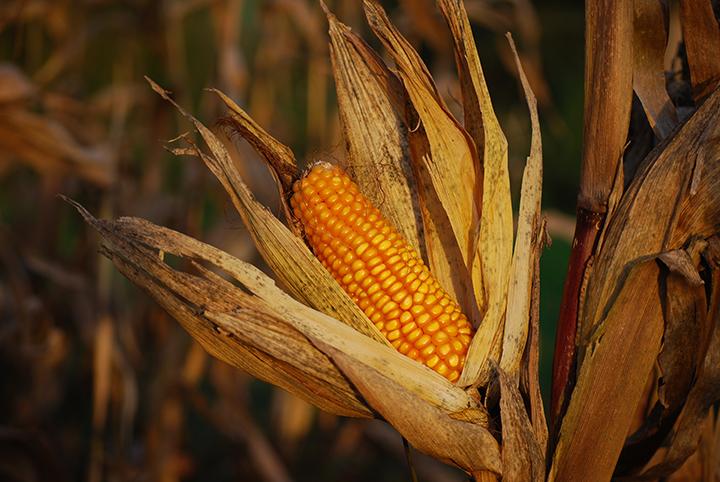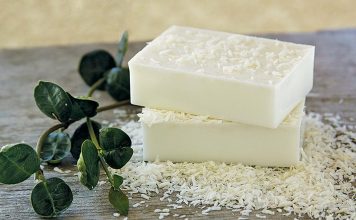| Issue #42 • November/December, 1996 |
As I write this, it is fall in New England. If you burn wood, you are probably well along with the annual chores of chopping, splitting, and stacking. Back in the spring, you had your chimney cleaned of creosote buildup (or if you have no fear of heights, you climbed up on the roof to do the job yourself). Around that time, you might have walked the woodlot picking the right trees to drop for your next year’s winter wood supply, and then the song of the chain saw was heard in the land. In the absence of a woodlot, you consulted the newspaper or a wood-burning neighbor to find seasoned firewood for sale at the best price. Any woodstove owner knows this routine well. It seems a fair exchange for the fire that warms your home during the coldest, darkest months of winter.
 |
Or is it? Even you, who secretly believe your stove is the best woodburner of them all, have occasional misgivings. There was that October two years ago when an early sleet storm froze the uncovered woodpile into one great ice cube. How long was it before you could get to that wood? Or the cold night in February when the green logs bubbled and steamed inside the firebox, giving off the meager warmth of a lighted match. The farmer who delivered your wood swore that it had been drying at least two years. It seems he meant two months. And what about the worst scenario: that time when black ooze spilled down along the chimney, a warning of an impending fire. You’ve only had that kind of creosote buildup once, but it gave you chills no fire can warm.
With all your reservations, you have remained loyal to wood heat. After all, the other options do not stand up in comparison. Electric heat is incredibly expensive, and oil is not far behind. Natural gas would be nice, but it is not piped in to where you live, and bottled gas is more expensive than wood. A kerosene space heater that warms only its immediate area is not a consideration. You continue to stoke up the fire.
Still, thoughts rankle. There is the interminable nuisance of cleaning out the ashes. For every bucket that is carried outside, a fine dust remains in the air and on surfaces inside the house. Spiders build slovenly webs that capture this dust, giving certain corners in the living room an Addams Family look. Far more unsettling is the fact that any friend or relative who has emphysema, allergies, or asthma does not feel totally comfortable visiting in your home for any length of time.
Less vital, yet still annoying, are the problems of dry air and static electricity. No amount of boiling water on top of the stove brings the humidity up to a healthy 30-40%. Your skin is constantly dry. Some of your furniture shows signs of coming unglued. The dining room table wobbles dangerously. If you own a computer, you must remind yourself to touch the anti-static pad before you put your hands on the keyboard. To forget could mean wiping out the memory.
Heating with corn
For all of these grievances, big and small, there is apparently no ready answer. Until now. In the past ten years, there has been a revival of a heating method so obviously efficient that it is remarkable how few people know of it: using corn for fuel. A corn stove does not burn stalks or left-over cobs. It burns kernels, less than a handful at a time. No, the corn doesn’t snap, crackle, or pop. (One of the things people ask is whether the corn pops as it burns.) Corn contains oil and ethanol, which burn cleaner than other fuels, and more cheaply, too. Once you learn how valuable this reasonably priced source of fuel is, you have to wonder why someone in the government has not caught on to the idea of using corn for more of America’s energy needs. Given the current political climate in DC, maybe you don’t wonder at all (but more about that later).
Corn stoves have been used in the South and Southwest since 1969, when the stove was invented by Carroll Buckner of Arden, NC. The most famous demonstration of the stove was in the Oval Office, installed during the administration of President Jimmy Carter. Even that, as grand a promotion as one could ask for, was evidently not enough to create a rush of orders nationally.
Here in New England where people are likely to mistrust ideas that come “from away,” the corn stove might look to some like a southerner’s gimmick to use up waste corn. Northerners might also think that any stove used in the South will not really do the job in their cold climate. They would be wrong about that.
In the last few years, corn stoves have been showing up for demonstration at county fairs all over New England. You might have seen one and passed on by, thinking it was just one more wood stove. The only difference, at first glance, is that the fire burning in the glass window is tiny compared to a wood fire. Small as it is, it is capable of producing 60,000 BTUs or more. A lot of heat.
Living with a corn stove
Pour a 50-pound bag of corn into the hopper, light the fire, and go about your business. Unlike the wood stove, after the initial lighting, you do not have to keep an eye on it, poke it, or refill it every hour or so. It burns for at least 24 hours. After filling the hopper of your corn stove, you can go away overnight in the winter without fear of the pipes freezing. To a person who is accustomed to burning wood, that is a luxury.
No more chopping or splitting. No more stacking. No messy ashes. There is no danger of fire, no smoke, no poisonous effluent released into the air, and a minimal amount of dust settles inside the house. For every bag of corn you burn there is a small “clinker” left in the stove to poke out to the side of the fire box. Later, when it is cool, you crumble the clinker and add it to your compost or save it to sprinkle it on your lawn in the spring. The corn stove is safe to touch on its exterior surfaces. Only the door and its window would cause a burn if touched.
 |
The corn stove does not have to use air from inside the house for combustion, although frequently it is hooked up to an available chimney. Instead, it can draw air for combustion from outside, thus alleviating the usual dryness that afflicts homes heated with wood.
There is no need to clean the chimney each year. In fact, you do not need a chimney. A corn stove can be situated free standing and without a hearth next to an outside wall. A dryer-like vent is all that is required.
Unless you have a woodlot, corn costs less to burn than all of the other fuels except for natural gas. A renewable resource, corn can be replaced in three months’ time. Compare that to 30 years replacement time for trees, and 3000 years for oil, and you have one of America’s largest and least expensive resources. Yet corn is actually stockpiled by our government, while it struggles endlessly with the politics and the cost of importing oil from other countries. The search for more sources of coal, oil, and other fuels here in our own land is conducted at great expense to taxpayers, while corn and ethanol are, for the most part, ignored.
There may be other, more personal reasons why Americans have not yet begun to use corn for heat. New Englanders, for instance, are loyal to what warms their nest. They discuss wood stoves with the same fervor they ordinarily save for their cars and trucks. Models are important. Form and function are fascinating. Economy in terms of cords burned is as important as gas burned in miles per gallon. Although we New Englanders are not pioneers when it comes to trying new-fangled gadgets, we reverted to wood burning quickly enough when oil prices skyrocketed a few years ago. Wood after all is a time-honored fuel.
Will corn catch on?
So when will we catch on to corn? Soon. At least 500 stoves have been purchased each year over the past three winters in Maine and another 700 in New Hampshire. Vermont is the slowest to acknowledge the advantages of corn heat. As the yarn goes, a Vermonter will not buy an item unless it is recommended by a Vermont native, preferably a neighbor or friend who already has one. That makes it a challenging market to break into.
Changing from one source of fuel to another can be expensive. Not everyone can afford to abandon a current source of fuel, even if corn is cheaper and cleaner. (I paid about $2000 for my corn stove. I’ve heard there will soon be a model available for half that.) Still, those who are tired of paying high fuel bills owe it to themselves to check on prices and do some figuring:
1. Research into actual heating costs in four northeastern U.S. cities found shelled corn fuel to have the lowest cost-per-unit of effective heat over nine other “traditional” heating fuels, from oil to wood pellets. (I got this information from the distributor who sold me my corn stove.)
2. It takes 2.2 bushels of corn to produce one million BTUs of heat, at an average cost of $8.79. Producing that much heat by burning wood costs, on average, $22.07. (You can use other oil-bearing grains, too.)
3. Heat from wood stoves can’t be controlled as well, so there is some waste of heat. Corn stoves are designed to feed the burn unit automatically with the exact amount of fuel required to produce heat at a pre-set temperature. There’s no waste. And corn stoves are much more efficient than wood stoves, so you get more heat from the fuel.
The downside
For those heating with wood, there are two advantages that corn cannot offer. One is radiant heat. I have heated with both wood and corn for years. Members of our family often stand near the woodstove for the comfort it offers (a habit so ingrained that they are apt to do it even in summer, when the fire is not burning). A corn stove, however, does not raditate that kind of immediate warmth. You can’t cook on it, either. Although it can be every bit as attractive to look at as a wood stove, it is not hot to the touch, so the heat from within must be forced out by an electric blower.
The second advantage of wood heat is for emergency power outages. A corn stove needs electricity to operate the auger and to blow the heat into the room. When people purchase a corn stove, they often save their old wood stove as a standby for those occasions when the power fails and for the incredible sub-zero nights when extra heat is needed. Corn stove distributors also offer a 24-hour battery backup in case of outages, but that costs an extra $300 or more to install, and the battery, of course, has to be re-charged.
 A corn stove doesn’t need a chimney: it’s vented through the wall. A corn stove doesn’t need a chimney: it’s vented through the wall. |
If you cherish silence in your home, the hum of the corn stove’s motor may be a temporary annoyance. I live in rural Maine, and I had always heated with wood. The mechanical sounds of the corn stove, like the fan on my computer, seemed an intrusion at first. I had forgotten how quickly I became deaf to the sound of furnaces in other houses, as well as the refrigerator and the water heater in my own home.
In addition, like any other appliance or piece of equipment, corn stoves have little idiosyncrasies you learn to live with. You will need to experiment for a few weeks (or longer) to feel comfortable running the stove. Starting up the fire is not that much different from starting a wood stove. You can use paraffin blocks, twigs, or wood chips. Once started, the stove regulates itself. At first, you will need to watch for signs that the corn has actually caught and that the auger is dropping the right amount of corn into the fire box.
With wood, it is a given that there is some dirt and other residue attached to the bark. Corn, on the other hand, should not be dirty. If a piece of stalk, for instance, gets twisted and caught inside the auger, that slows down the fire and can cause the fire to go out. Sometimes there is a buildup of corn in the fire box, and then when more corn drops down, the fire is smothered. There are similar inconveniences with a wood fire, but on a different scale.
Use a good grade of corn
Buying corn from a farmer or a feed supply store means insisting on clean, dry fuel. Ask about the grade of corn for sale. The higher the quality of the corn, the hotter it will burn. Any grade corn can be burned, but the corn that supplies the most energy as animal feed also burns the hottest. Most suppliers are beginning to understand that there is a growing market for fuel corn. Those who do are glad to supply clean, high quality corn at a good price.
When thinking of storage for corn, think small. You can store two tons of corn in 50-pound bags in one corner of your garage (about six feet high, six feet wide, and two feet deep). That is the usual amount delivered at one time and is enough to heat your house for two or three months.
The corn stoves of today are much more efficient than the one invented in 1969. Even five years ago there were no thermostats for them. Today, thermostats are an option. Five years ago there were probably only two stove models available. There are at least six now. One early model, the one owned by the author, could be mistaken for a clothes dryer.
Occasionally, because our stove is attached to the chimney, on a day when we turn the corn stove down low, we notice the faint but sweet perfume of cooking corn in the air outside. This is in conspicuous contrast to the smoke billowing from a neighbor’s chimney. Our corn stove, homely as it is, has won our allegiance hands down.
Judith Monroe lives on a Maine mountain at the edge of a 600 acre wood. She buys her corn from a farmer in a nearby town and burns wood from her own land. She writes poetry and fiction, and is the author of two books about life on a Maine island where she lives in the summer.














Sometime in the next year we’re going to build a small club house. We’re in southern Illinois, we have multiple businesses, but also farm some. I’m going to heat with corn. For storage, I’m going to use a bulk bin. Holds any amount you want and is delivered to us with Bulk Feed truck. Very handy…
What brand and model corn stove do you have?